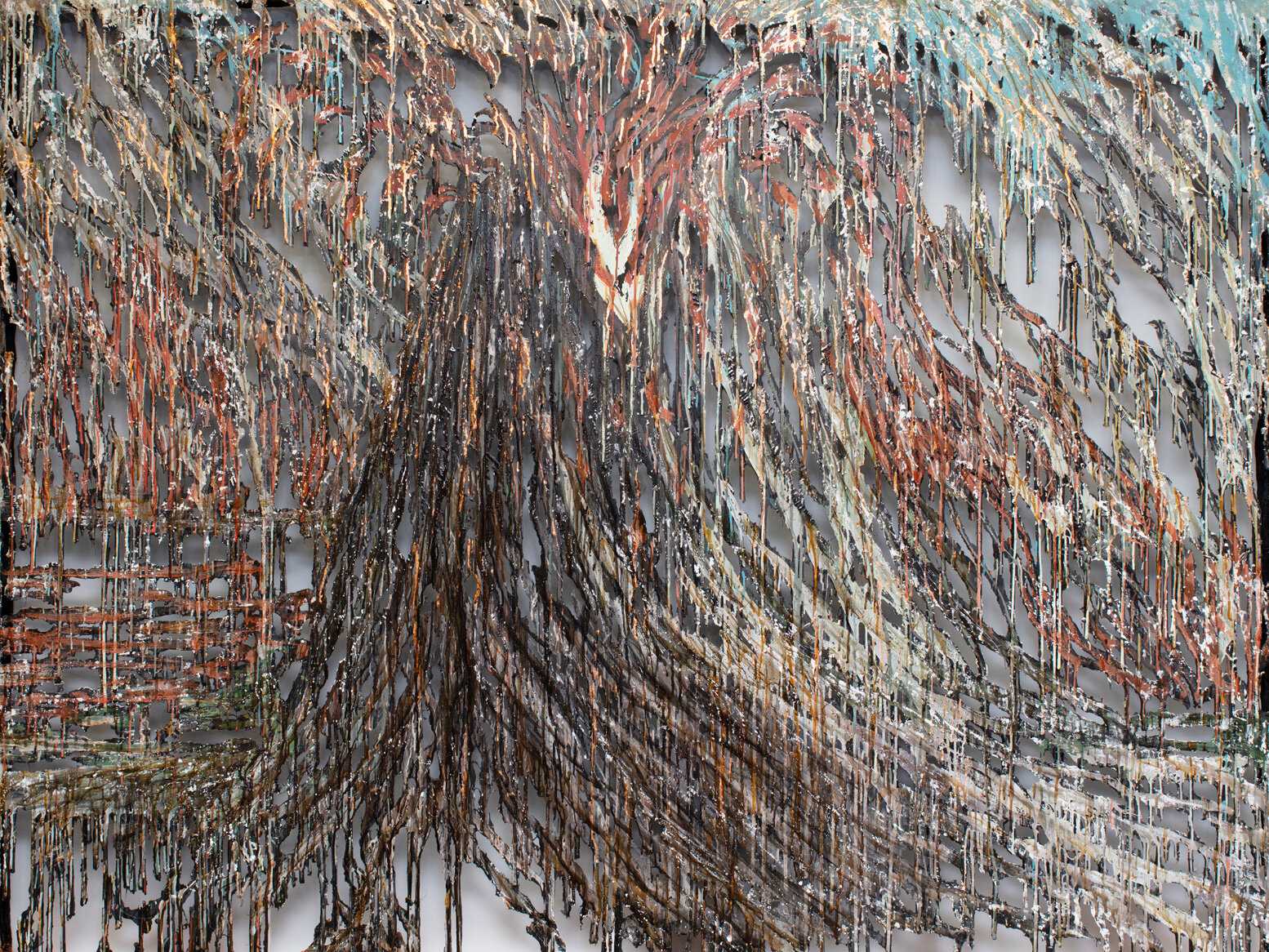
Diana Al-Hadid
After encountering a parahelion—an atmospheric optical phenomenon that suggests the presence of as many as three suns—Diana Al-Hadid discovered The Book of Miracles, a German 16th-century manuscript that depicts unexplained natural celestial phenomenon in luminous detail. These details include parahelia, blood rains, insect invasions, and comets carrying swords. The manuscript once served as a spectacular discovery for Renaissance art by reflecting apocalyptic anxieties that emerge during times of dramatic cultural shifts. Because the book contains paintings that illustrate unexplained astronomical visions with mythological and religious narratives, it currently serves Al-Hadid as direct inspiration. The volume’s visions have been altered and transformed through the artist’s unique process, which turns wall-mounted pictures and three-dimensional sculptures into modern-day ruins through the use of materials, such as plaster, fiberglass, polymer and steel. In Al-Hadid’s hands, the visions in The Book of Miracles are updated yet remain fundamentally the same: they reflect humankind’s immutable longing for grace, mercy and the miraculous.
— CVF, USFCAM
“The process of making something is a process of learning. It’s my link to the rest of the world, and everything that I get interested in is through my work and for my work.”
— Diana Al-Hadid
"Sometimes artists don’t have many words. Sometimes artists are not ready to perform. Sometimes artists need to withdraw. Sometimes artists need fewer distractions and more silence. In fact, we all do. We have been experiencing a global existential crisis for some time. We’ve finally been made to stand still, to retreat into our homes, our families, ourselves. Let's first survive this pandemic. Let's absorb all this collective silence, all this ambiguous not-knowing, and use that energy to build better worlds."
— Diana Al-Hadid
About Diana Al-Hadid
(Aleppo, Syria, 1981)
She currently lives and works in Brooklyn, New York.
Diana Al-Hadid is known for a practice that spans media and scale, and examines the historical frameworks and perspectives that shape our material and cultural assumptions. Al-Hadid’s sculptures, panel works, and works on paper are built up with layers of material and history. Her rich, formal allusions cross cultures and disciplines, drawing inspiration, not only from the history of distant civilizations, but also from the histories of materials themselves. Her work borrows from a variety of sources ranging from Old Master paintings to the innovative works of the Islamic Golden Age, with an interest in how commonly understood typologies and histories can be distinguished. She has been the recipient of a Joan Mitchell Grant, a Louis Comfort Tiffany Grant, a New York Foundation for the Arts Grant, and a Pollock-Krasner Grant. She is also a United States Artists Rockefeller Fellow. Al-Hadid has had solo exhibitions at the David Winton Bell Gallery at Brown University (Providence, RI), NYU Abu Dhabi University Gallery (Abu Dhabi, UAE), The Vienna Secession (Vienna, Austria), the Columbus College of Art and Design (Columbus, OH), the Akron Museum of Art (Akron, OH), the Savannah College of Art and Design (Savannah, GA) and the Weatherspoon Museum of Art (Greensboro, NC). She has had large public installations at Madison Square Park (New York, NY), Williams College (Williamstown, MA), and Cheekwood Estate and Gardens (Nashville, TN).
Artist website: dianaalhadid.com
Artist Instagram: @dianaalhadid

